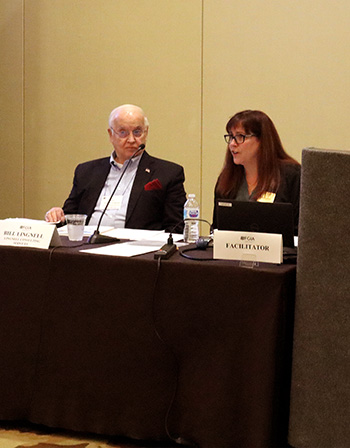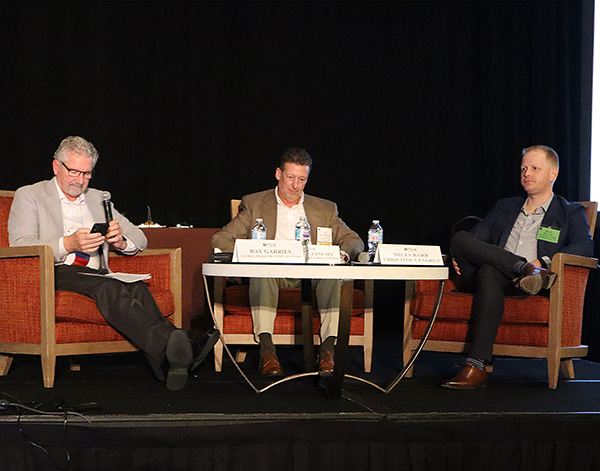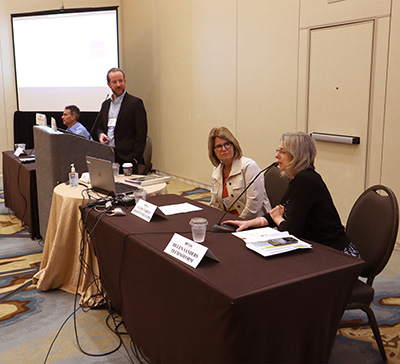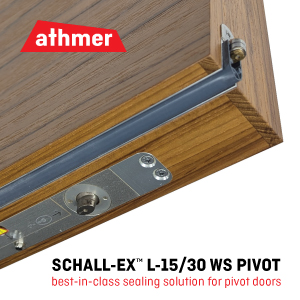FGIA roundtables focus on window innovation, sustainability and trends
Roundtable discussions at the 2022 Fenestration and Glazing Industry Alliance Hybrid Annual Conference in Amelia Island, Fla. highlighted trends like thin triple glazing, sustainability best practices, and case studies on window industry innovations.
Understanding the difference: Thin triple versus traditional triple pane units
Kathy Krafka Harkema, FGIA's U.S. technical operations director, and Amy Roberts, FGIA director of Canadian and technical glass operations moderated a discussion comparing thin triple glazing to traditional triple pane units featuring the following panelists:
- Robert Grommesh, IG technical service manager at Cardinal IG
- Robert Hart, principal scientific engineering associate at Lawrence Berkeley National Laboratory
- Joe Hayden, principal engineer at Pella Corporation
- Bill Lingnell, FGIA glazing consultant at Lingnell Consulting Services.
“There is a lot of potential for growth in this area,” said Hart on thin triples. “The case for thin glass is really Energy Star. Traditional triple pane is too heavy, too wide, too expensive at times for retrofits. Thin triples provides a drop-in replacement.”
These industry experts highlighted the differences in traditional triple pane windows and thin triples, how thin triples relate to the proposed U.S. Energy Star 7.0 specification and why energy proponents are driving the use of more “thin triple” technology as I-Codes, including in building the potential for more energy efficient fenestration products. Lingnell said some architects in the commercial sector are looking at thin triples, although not as much as residential. “But it will come to pass,” he said.

Embracing innovation in the window industry
Ray Garries, owner and president of Global Fenestration Advisors, moderated a roundtable discussion about the latest innovations in the window and door industry. Garries and the following participants reviewed recent market innovations:
- Tim McGlinchy, executive vice president of engineering, research, and development at GED
- Miles Barr, chief technology officer at Ubiquitous Energy
- Chad Swier, product manager - balances and sliding windows at AmesburyTruth

“Innovation does not have to just be for engineers or technical people,” said Garries. “Everybody has great ideas.”
The panelists shared ideas and walked through how each was conceived and eventually carried out, ranging from a window product that changed how a balance locks when the sash is tilted or removed, a product tracking system to solve the challenge of misplaced windows, and a coating that can turn a window into a transparent solar panel. “We are in the process of developing our first full-scale manufacturing line, floor-to-ceiling windows. You can feed the energy into a grid to power devices, mechanics and more,” Barr said.
Environmental and sustainability trends and considerations
A panel moderated by Aaron Blom, FGIA technical training specialist, addressed ideas on beginning a company's sustainability journey and offered a clearer understanding of the difference between embodied carbon and operational carbon. Participants heard advice from three different companies on these environmental matters and more. Panelists were:
- Chris Giovannielli, product manager at Kawneer
- Helen Sanders, general manager at Technoform
- Cathy Tarkey, market development manager at Sherwin-Williams
- Douglas Mazeffa, global sustainability director at Sherwin-Williams

Panelists discussed an increasing need for education of employees about sustainability and how it can begin from the ground up in manufacturing facilities. “People think sustainability is just about recycling,” said Sanders. “Education is needed. Dig deeper to see if your chosen path is a sustainable one.”
Panelists agreed there is still plenty of innovation and sustainability work to be done. “We want our culture to prioritize sustainability,” said Mazeffa. “It's a journey.”

